Today I was up at the crack of dawn. In order to avoid disturbing Sarah too much I went over to Hotel Eva to partake of their very ordinary “all you can eat” buffet breakfast, to fuel me for my long day at Auschwitz. Unfortunately my plan backfired vis a vis Sarah, because I left my ticket behind for the trip and discovering this and the fact that I had not switched my phone on, Sarah had to get up and get dressed before I finally saw that she had been trying to phone me. I suppose that saved her a walk over to the hotel, but it wasn’t much of a lie in.
Having retrieved my ticket I waited for the transport to pick me up for the journey. A red VW people carrier arrived, with heavily blacked out windows and the driver asked me to get in the front.
He proceeded to drive at what felt like breakneck speed to Auschwitz. I couldn’t see the speedometer so I don’t know if he was actually driving like a lunatic or whether four months in Basil, sitting 10 feet off the road, had changed my perspective on speed. The driver interspersed our journey with facts about various unremarkable buildings in barely decipherable English. A typical description was “factory for resickling aluminium” as we passed a scrap yard.
When we finally arrived at the car park of Auschwitz I climbed out of my front seat and much to my amazement six other people emerged from behind the blacked out windows in the rear. I had spent the entire 60 km trip thinking I was on my own, while six people sat perfectly silent behind me! In my defence there were no mirrors allowing me to see into the back, the rear windows were blacked out and my seat had a huge head rest, but still!
Auschwitz-Birkenau is made up of two different sites about 3km apart. Auschwitz I is where we started our tour and was an old Polish army camp adopted by the Nazis, initially to imprison and execute Poland’s elite. Auschwitz II or Birkenau was a much bigger facility, built to house and execute, on an industrial scale, the whole of Europe’s Jewish population.
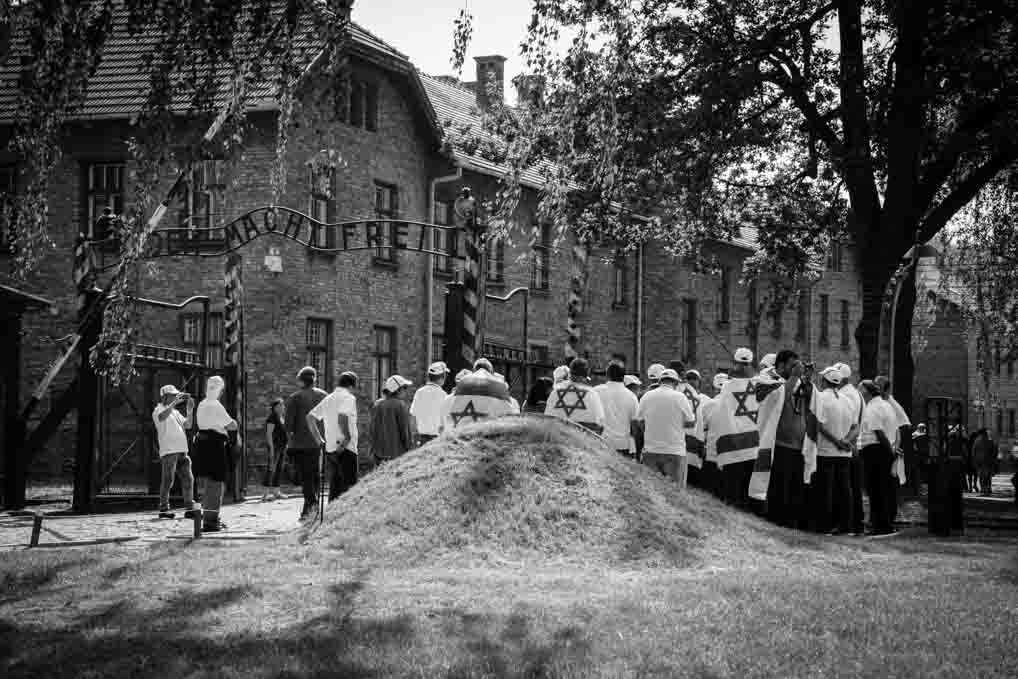
Auschwitz I Entrance
Most of Auschwitz I still stands. Only the crematorium was removed by the Nazis when the industrial scale crematoria were set up at Birkenau.
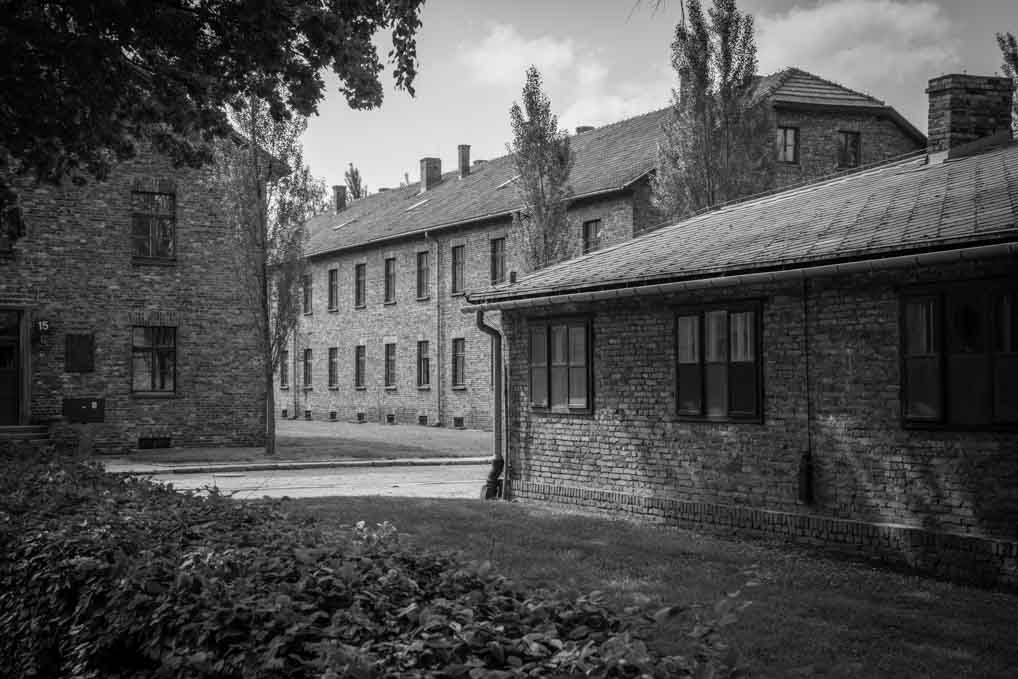
Auschwitz I
We met our excellent guide Anna and our group of 7 were amalgamated with a similarly sized group for our tour of both sites. At this time of year all visits must be as part of a guided tour. Anna was an excellent and extraordinarily knowledgeable guide but for me, going round the sites, especially Auschwitz I, with a large group, at the pace set by the guide somehow reduced the impact the visit might have had if I had been able to wander and contemplate at my own pace.

Auschwitz I
You enter Auschwitz I through the infamous “Arbeit macht frei” (roughly translated at through work freedom) gate and then the camp has been set out as a huge museum. Some of the buildings have been configured to show how prisoners lived and others have exhibits set out in them. For instance there is a building entitled something like “evidence of crimes” which contains an exhibit of 2 tons of human hair (apparently 7 tons were found when the camp was liberated); hundreds of suitcases; thousands of pairs of glasses; and thousands of pairs of shoes.

Auschwitz I Shoes
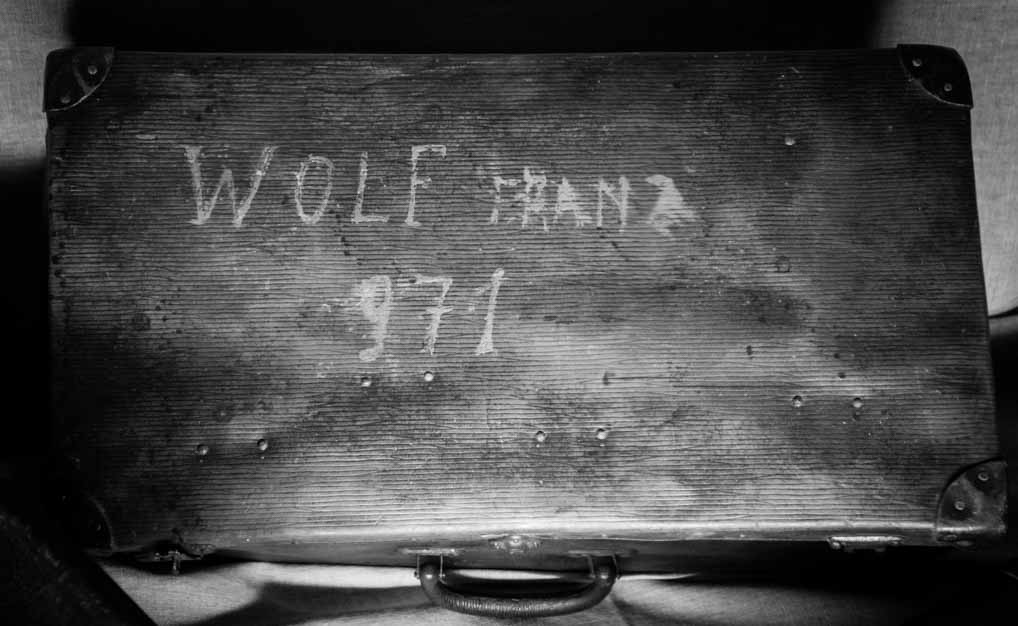
Mr. Wolf’s Suitcase. One of hundreds on display.
In other buildings there are Nazi documents; in another unbelievably cruelly conceived punishment cells; and in one of the most moving the whole central corridor of a prison block is lined with stark black and white photographs of Polish Jews and others with their date of birth, profession and date of death written underneath the photograph.
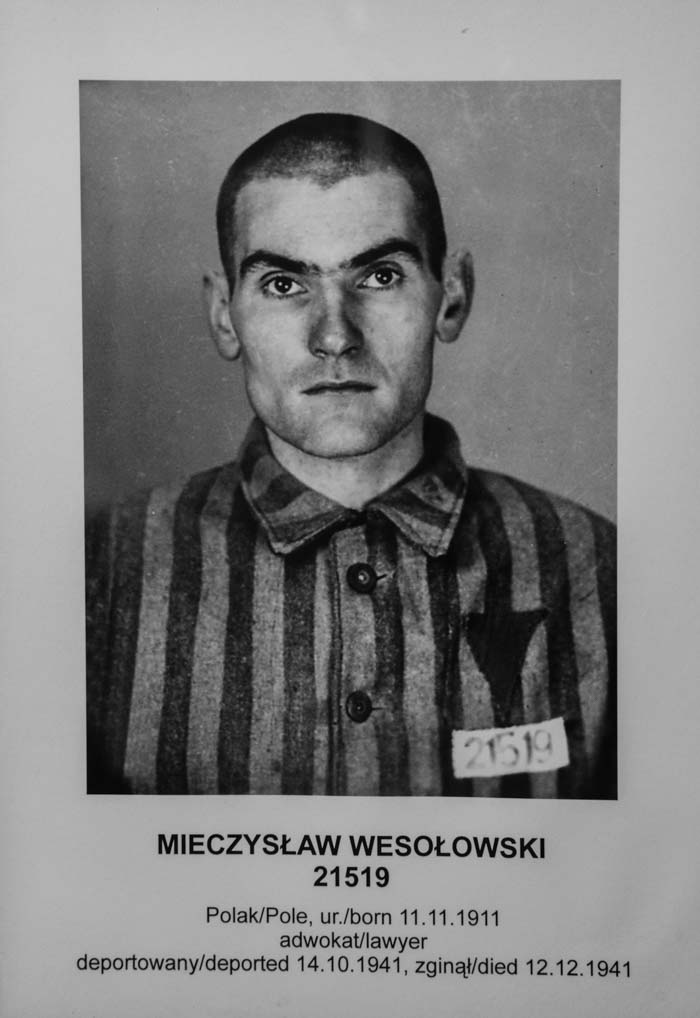
The final building we entered at Auschwitz I was the original gas chamber, where the use of the poison Zyklon B was perfected, if those of the right words, against Soviet Prisoners of war. The adjacent crematoria has also been reconstructed using original metal parts.
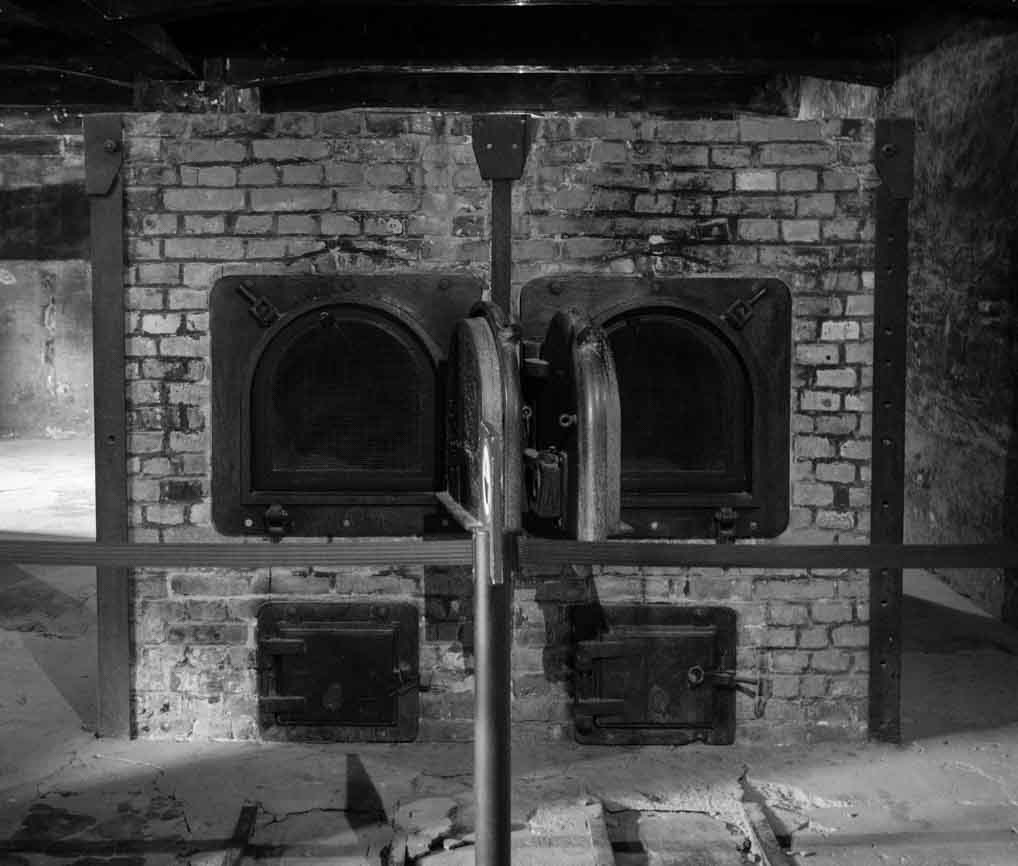
Reconstructed Crematorium
The second part of the tour takes place at Birkenau. There are fewer exhibits here, but to me it was the more moving of the two sites. This is where, let us not forget, that over 1.1million people were clinically put to death, mostly in gas chambers and disposed of in specially designed and constructed industrial crematoria. 90% of those murdered were Jews (c. 960,000). The rest a mixture of all those hated by the Nazis, including non Jewish Poles (c. 75,000), Roma Gypsies (c 20,000), Soviet Prisoners of War (c 15,000), and non Jews from various nations (c10-15,000).
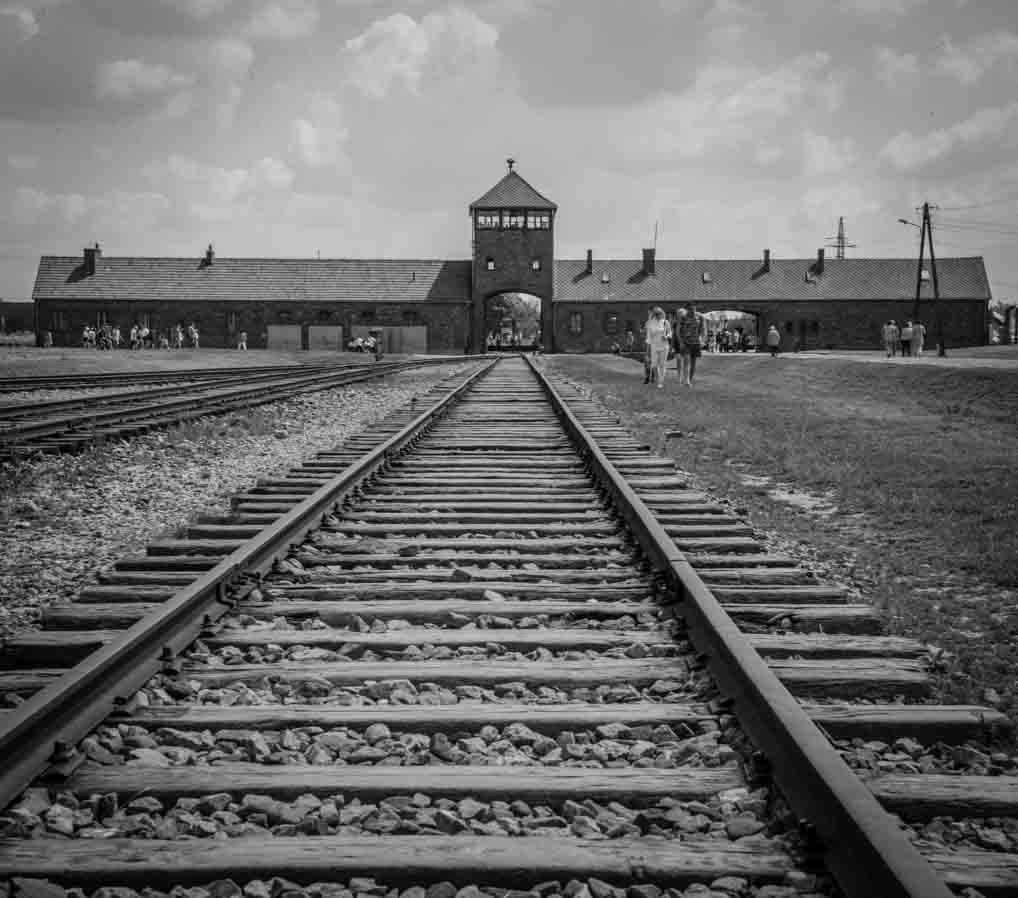
Birkenau
It is the knowledge of the scale of the murders coupled with the enormous size of Birkenau (400 acres) which really brings home the unprecedented scale and nature of the crimes carried out at this site.
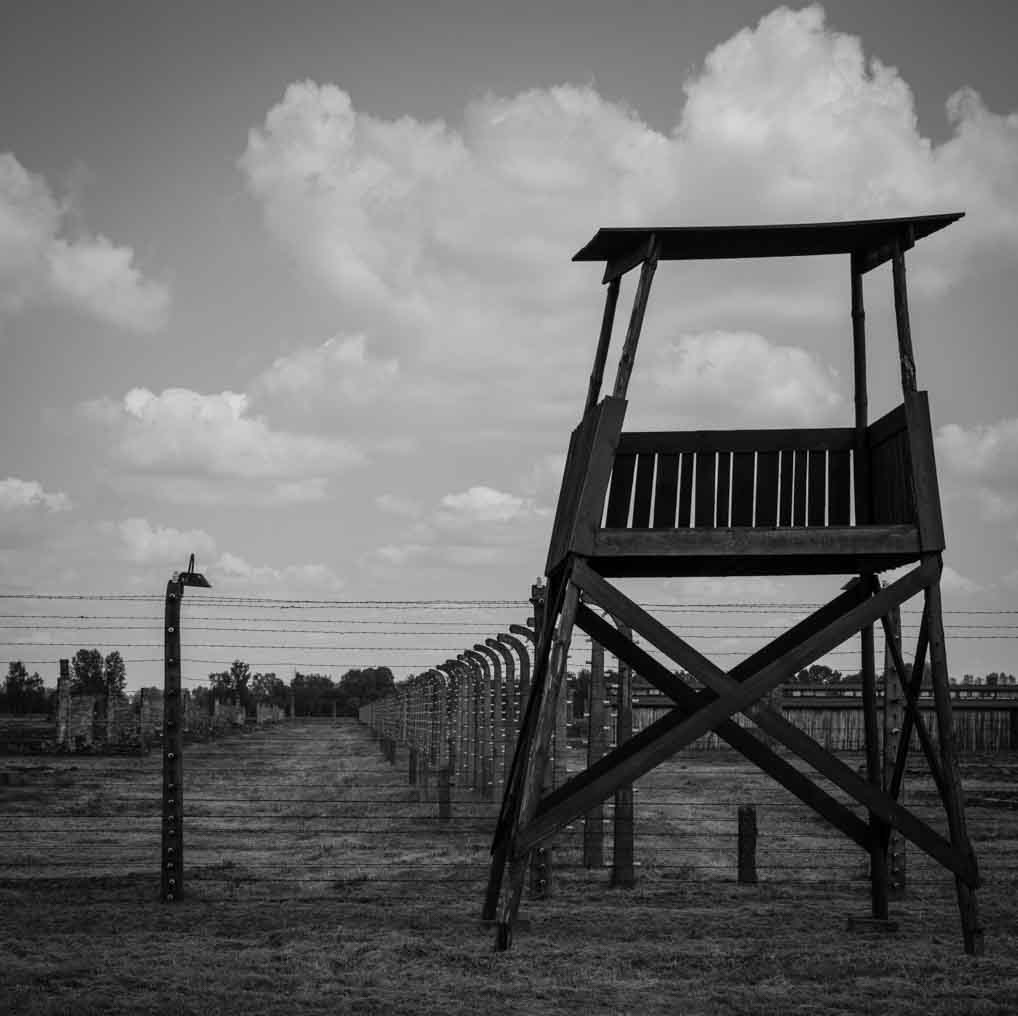
Guard Tower Birkenau
The camp itself consists of the infamous gatehouse through which the railway lines which brought the prisoners passes. There is a central unloading area and then on either side there would have been mostly wooden huts, sufficient to house up to 100,000 people at its peak. The four gas chambers and associated crematoria were blown up by the retreating Nazis and all the wooden huts were set alight. So now all that can be seen are the few surviving brick buildings and dozens of disembodied brick chimneys, which would have been the fireplace in each, now non-existent, wooden hut.
The grisly remains of the crematoria have been left as they were destroyed. Their purpose not now clearly discernible but testament to what took place nonetheless.

Destroyed Crematoria
I am very glad that I visited Auschwitz-Birkenau, a place we must all remember, even if we do not visit, as the scene of the world’s greatest ever crime. On a personal level I was not as affected by it as I thought I would be. Perhaps I’ve seen too many documentaries and read more than enough books on the subject. Or possibly it was seeing it as part of a group with the pace dictated to me. Whatever the reason I didn’t find the personal connection with the people who had died at Auschwitz. The tour and the exhibits, I felt, were too much about the camp and not enough about the people who were murdered. I would though strongly recommend a visit, possibly outside the summer months when a more contemplative exploration of the site and exhibits may be possible.
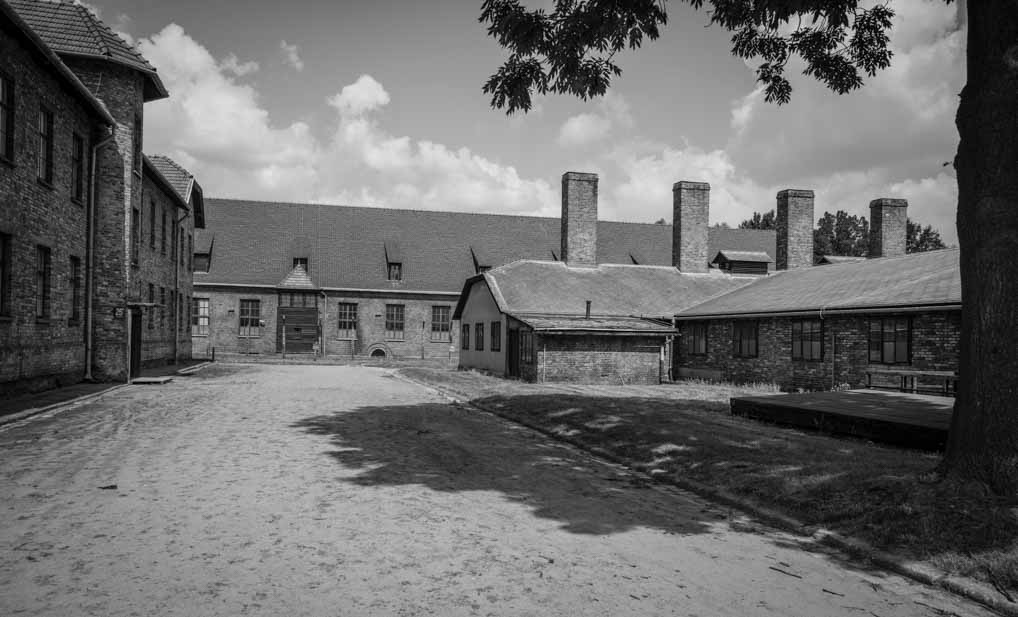
Auschwitz I
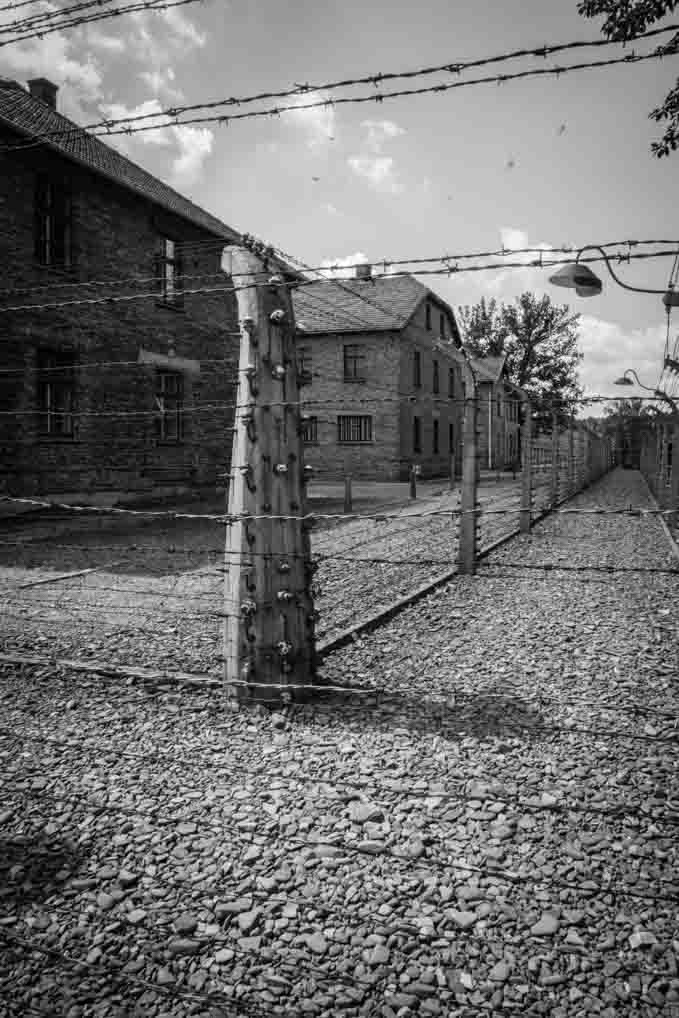
Auschwitz I
